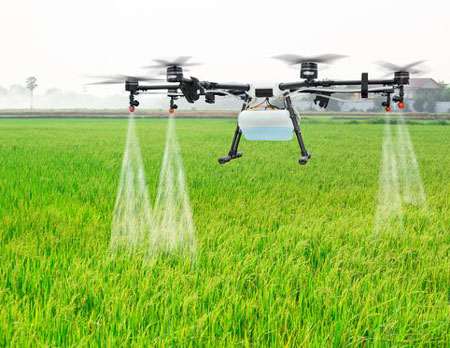Sheath blight, caused by the fungus Rhizoctonia solani, is one of the most significant diseases in rice production worldwide. It impacts the health of the rice canopy, reducing leaf area, inducing premature senescence, and destroying young tillers. These factors collectively result in substantial yield losses. Below is a concise guide to the disease, its symptoms, causes, and management.
Why and Where It Occurs
Environmental Conditions:
- High temperatures (28−32°C) and humidity (85−100% within the canopy).
- Rainy seasons provide optimal conditions for disease development.
Agricultural Factors:
- Excessive nitrogen fertilization.
- High seeding rates or close plant spacing leading to dense canopies.
- Presence of sclerotia or infected plant debris in the soil or floating on water.
- Use of high-yielding varieties prone to disease.
How to Identify
Symptoms by Crop Stage:
- Observed from the tillering to the milk stage of the crop.
- Initial lesions: Oval, greenish-gray, 1–3 cm long, usually appearing on leaf sheaths near the water or soil level.
Disease Progression:
- Lesions expand upward to leaf sheaths and leaves, spreading to nearby tillers or plants.
- Older lesions become irregular, with gray-white centers and brown margins.
Role of Sclerotia:
- In subtropical regions, sclerotia initiate disease (up to 2 million per square meter).
- In tropical systems, the role of sclerotia is less clear, but hyphal spread is critical.
Differentiating from Similar Diseases:
- Check for irregular lesions with distinct margins on leaf sheaths.
- Presence of sclerotia confirms sheath blight over stem rot or stem borer infestation.
Why It Is Important
- Sheath blight ranks as the second most important rice disease after blast.
- Yield losses:
- Up to 25% if flag leaves are infected.
- Up to 50% in highly susceptible cultivars (e.g., in the United States).
- Losses of 6−20% are common in tropical Asia and Japan.
How to Manage
Cultural Practices:
- Use appropriate fertilizer levels suited to the cropping season.
- Maintain proper crop density by reducing seeding rates or increasing plant spacing.
- Control weeds, especially on field edges and levees.
- Early drainage of rice fields to limit epidemic spread.
Chemical and Biological Methods:
- Use fungicide-treated seeds.
- Employ fungicides during critical growth stages if necessary.
Integrated Approaches:
- Optimize canopy architecture to reduce humidity.
- Implement crop rotation to reduce pathogen buildup in the soil.
Sheath blight remains a significant challenge for rice farmers. By adopting these management strategies, yield losses can be minimized, ensuring healthier crops and sustainable rice production.








